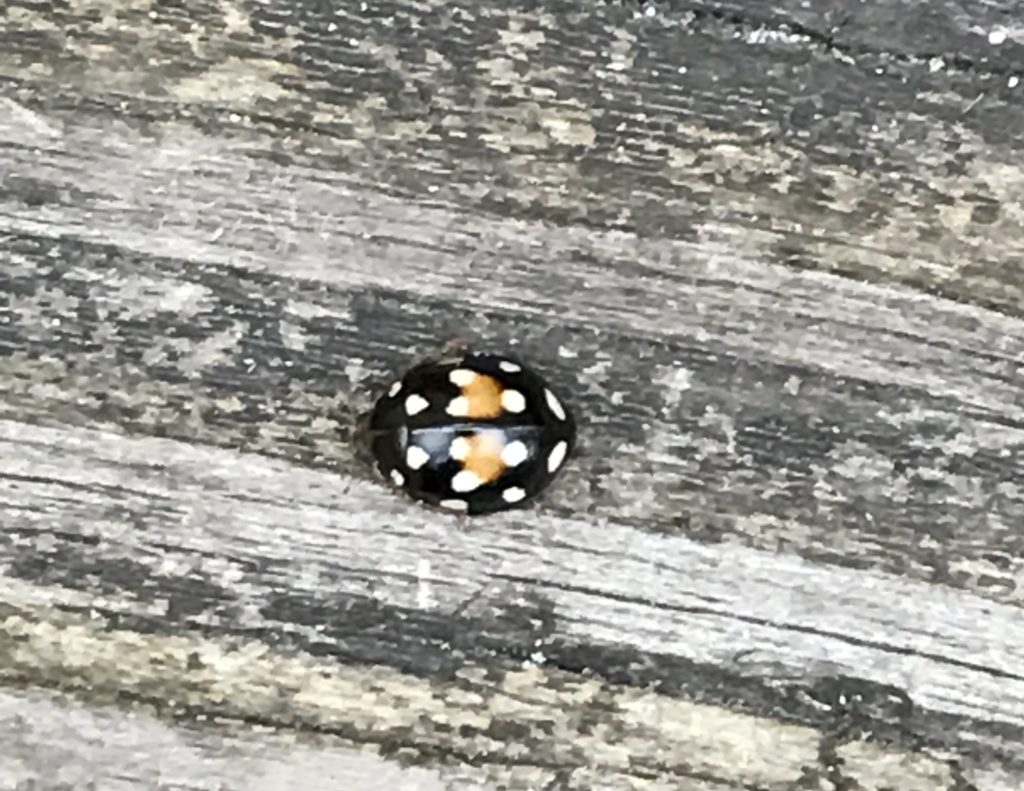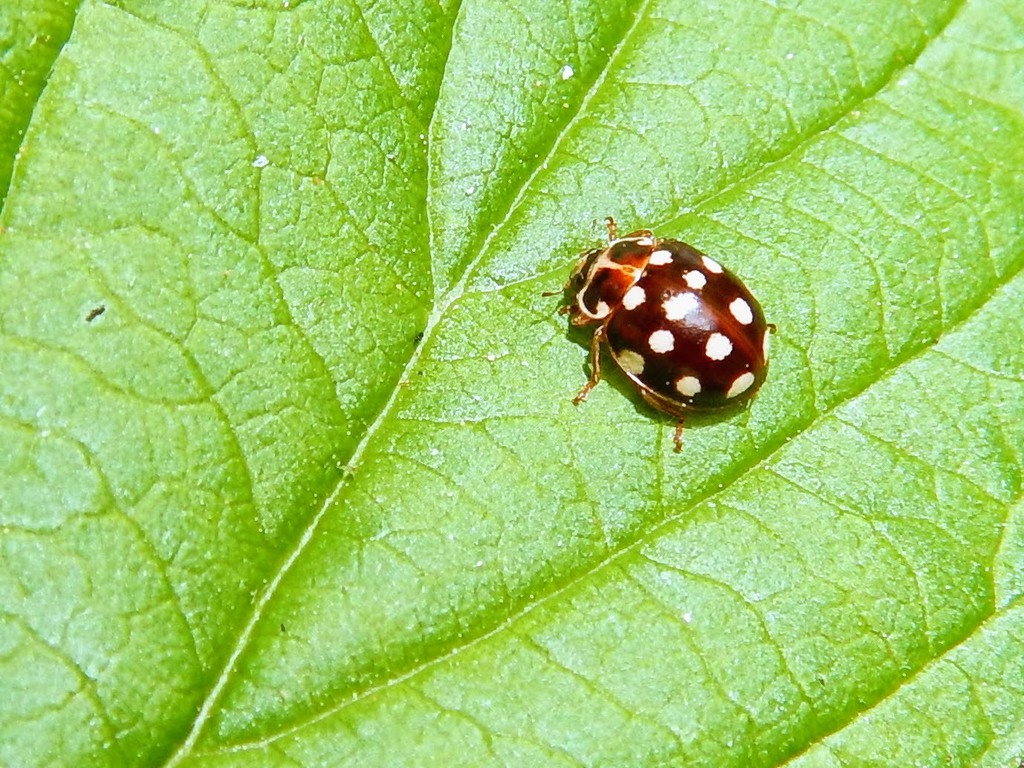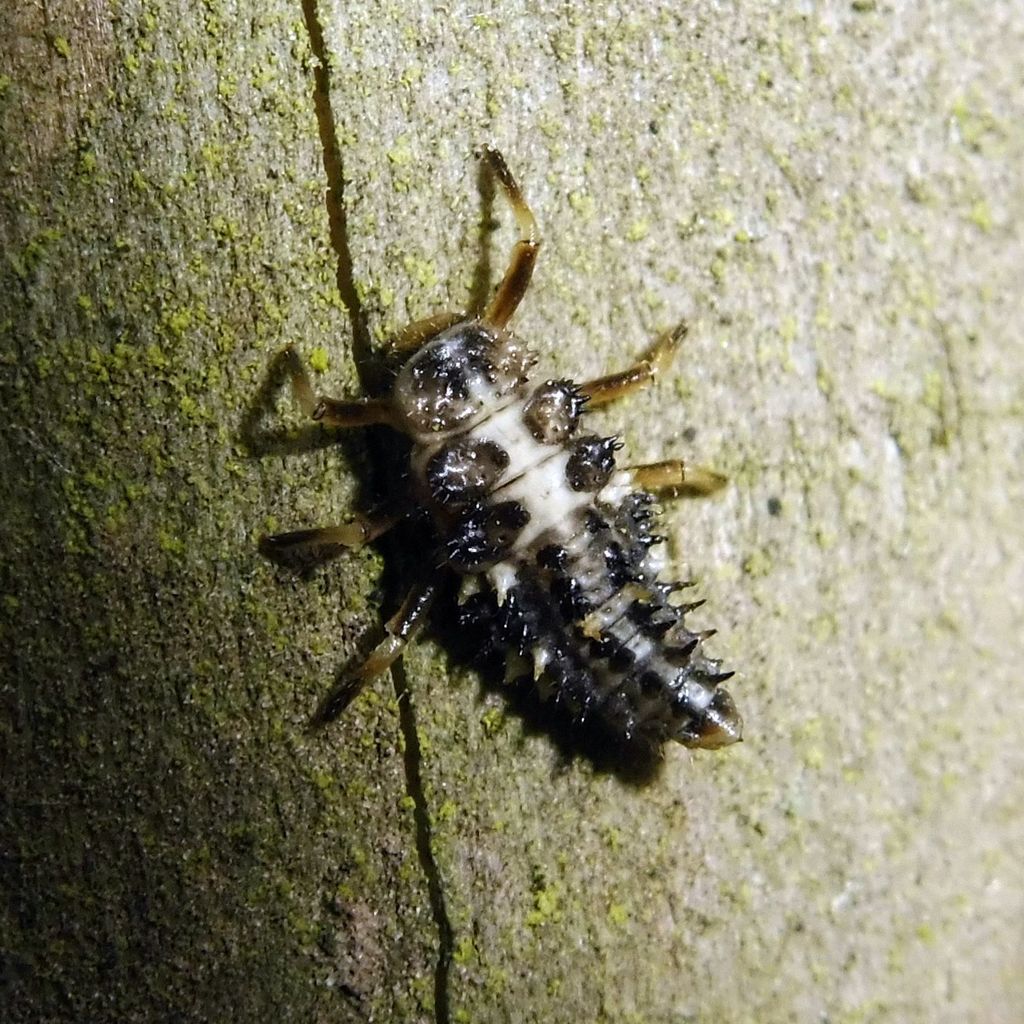
Cream-spotted Ladybird © stormwatcher21 (iNaturalist)
The Cream-spotted Ladybird is a native species that is also found in Europe and Asia. It comes in a vast array of colors and patterns. It feeds primarily on aphids.
Status
Native
Not ranked in the United States, but listed as Imperiled in Saskatchewan; Vulnerable in Labrador, Yukon, and the Northwest Territories; Apparently Secure in Alberta, Ontario, New Brunswick, and Nova Scotia; and Secure in British Columbia.
Last Seen
2020
Fun Fact
The name “cream-spotted” is descriptive of both the European variation of this species and a black with white spots color morph found in North America, however they can also have red spots or black spots of various numbers and background colors.
Identification
The Cream-spotted Lady Beetle is polymorphic, meaning that it has high variation in coloration and elytral patterns. It is 4 to 5.5 mm in length.
- Elytra can be black with 14 white spots, brown with 14 white spots (European variety), black with 2 or 4 red spots, or orange with 12 black spots.
- Pronotum is the same color scheme as the elyra, usually with two large, black, semi-rectangular spots. These spots sometimes bleed into each other a little.
- Head is variable, appears to usually be black.
- Often confused with the Asian Lady Beetle, Spotted Lady Beetle, Parenthesis Lady Beetle, and the Eye-spotted Lady Beetle.
Habitat
Habitat generalist, preferred habitat is in deciduous forests, shrubs, orchards, parks/ gardens. May also be found in dry grasslands and in agricultural crops.
General Range
West to northern California, east to New Jersey, north to northern Canada. The Cream-spotted Lady Beetle is also found in Europe and Asia.
Food
Psyllids and aphids, feeding on psyllids seems to increase the rate of Cream-spotted Lady Beetle larval development.
Life History
Development from egg to adult can take anywhere from 14 to 115 days, depending on temperature (cooler temperatures relate to slower development).
Eggs are coated in a compound that deters egg predation, including predation by Asian Lady Beetles. However, competition with Asian Lady Beetles for food may be a cause of decline in some regions.
More Information
You can find more information about Cream-spotted Ladybirds can be found using the following links:
Vermont Distribution
Visit the iNaturalist Observation Map and Occurrence Records to find out where Cream-spotted Ladybirds have been seen in Vermont.








